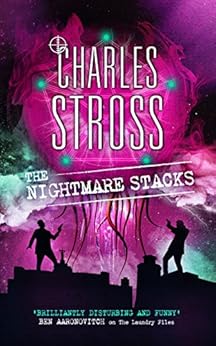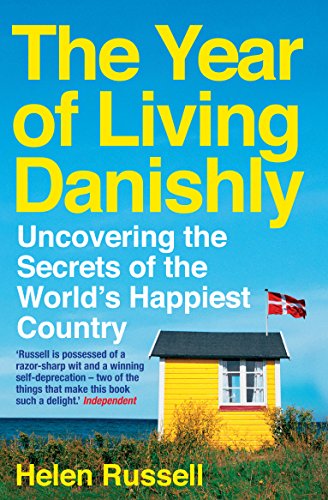I’ve read (or listened to, via Audible) 67 books in 2017. These were my favourites:
Armada by Ernest Cline. I enjoyed Ready Player One (which, with its mix of computer games, roleplaying games and Rush felt like it was written just for me) so when Armada turned up on Audible’s deal of the day, buying it was an easy decision. The story has a lot of similarities with The Last Starfighter (but the games are on a bigger scale) and Wil Wheaton’s narration is just perfect.
Sleeping Giants by Sylvain Neuvel. A first contact novel in which a strange alien artefact is discovered piece by piece. Unusually it’s written entirely using interview transcripts (with a very enigmatic interviewer) and journal entries. The sequel isn’t quite as good, unfortunately.
Hunting Hitler's Nukes: The Secret Mission to Sabotage Hitler's Deadliest Weapon by Damien Lewis. I’ve written previously about this.
The Nightmare Stacks by Charles Stross. Probably my favourite Laundry Files book so far, and not only because it features scary elves attacking Leeds (which is where I live). I think the only geographical mistake I saw is the reference to the Odeon, which hasn’t been in city centre for some quite (I think it must be at least a decade since it was turned into a department store).
Masters of Doom: How Two Guys Created an Empire and Transformed Pop Culture by David Kushner. I’ve written about this previously as well.
Old Man’s War by John Scalzi. This was a pleasant surprise at how much I enjoyed this. I picked it up as I spotted it was cheap for the Kindle, and I’d already read a couple of others of his so I knew it wouldn’t be awful. But I didn’t expect it to be as good as it was. It’s basically old people sent into space to fight, and makes a pleasant change from young kids doing all the heroic stuff. (The old people get new bodies, but retain their memories and perspective.) It turns out that I'm not the only one who liked this as it was Hugo nominated and generated a bunch of sequels. I gather Netflix may be turning it into a tv series.
 The Ballad of Halo Jones by Alan Moore and Ian Gibson. Best comic book series ever, as far as I’m concerned. A lot of praise goes to Alan Moore, but I am just as much a fan of Ian Gibson’s artwork (I’ve always enjoyed his art). I resubscribed to 2000AD a year or so ago and there has been nothing recently to match Halo Jones. It’s interesting how spare the dialogue is - there’s very little wasted, and some of the modern strips seem wordy by comparison.
The Ballad of Halo Jones by Alan Moore and Ian Gibson. Best comic book series ever, as far as I’m concerned. A lot of praise goes to Alan Moore, but I am just as much a fan of Ian Gibson’s artwork (I’ve always enjoyed his art). I resubscribed to 2000AD a year or so ago and there has been nothing recently to match Halo Jones. It’s interesting how spare the dialogue is - there’s very little wasted, and some of the modern strips seem wordy by comparison.
This was a re-read, as part of the current 2000AD partwork. It was nice to read the series in one hardcover volume, but being slightly smaller than the original and now being the wrong side of 50, I found the fonts a bit too small for comfort (so I’m not replacing my original Titan copies). Rebellion are preparing a colourised version for 2018. I’m not sure what I think of that as I really like the black and white art - I guess we’ll just have to wait and see.
The Night Without Stars by Peter F Hamilton. Second (and final) book in The Chronicle of the Fallers, this is a huge improvement on The Abyss Beyond Dreams, which I found a little slow. I like Hamilton - he writes well and his SF is full of augmented humans and other craziness. A good place to start is the thoroughly epic Pandora’s Star (and its sequel Judas Unchained).
The Year of Living Danishly by Helen Russell. This is Helen Russell’s delightful account of a year of living in Denmark. Her husband gets a job with Lego, and they both move to Denmark and embrace the happiest country in the world. I loved it - lots of laugh out loud moments as cultures clash and they try to fit in. I wouldn’t normally have chosen something like this, but Mrs H wanted to listen to it on Audible, and I thought I’d give it a try. I’m glad I did.
The Clever Guts Diet by Dr Michael Mosley. It’s really not a diet book, it’s instead an exploration of your biome and what it does for you and how to keep it healthy (TL;DR eat lots of veg, lots of variety, with occasional fasting). A healthy biome helps us lose weight, keeps us healthy. There are a small handful of recipes, but I didn’t read those. I preferred this over Gut by Giulia Enders as it’s easier to read, and seems more up to date.
Empire Games by Charles Stross. Excellent start to a new series in his Merchant Princes series (the one where the USA carpet-nuked one faction out of existence). The world-hoppers are back and trouble is brewing with two aggressive nuclear superpowers in two separate timelines. I don’t know if you need to read the previous series (starting with The Bloodline Feud), but I found that it helped.
So it seems I particularly enjoyed science fiction in 2017. I wonder what 2018 will bring...
Sleeping Giants by Sylvain Neuvel. A first contact novel in which a strange alien artefact is discovered piece by piece. Unusually it’s written entirely using interview transcripts (with a very enigmatic interviewer) and journal entries. The sequel isn’t quite as good, unfortunately.
Hunting Hitler's Nukes: The Secret Mission to Sabotage Hitler's Deadliest Weapon by Damien Lewis. I’ve written previously about this.
The Nightmare Stacks by Charles Stross. Probably my favourite Laundry Files book so far, and not only because it features scary elves attacking Leeds (which is where I live). I think the only geographical mistake I saw is the reference to the Odeon, which hasn’t been in city centre for some quite (I think it must be at least a decade since it was turned into a department store).
Masters of Doom: How Two Guys Created an Empire and Transformed Pop Culture by David Kushner. I’ve written about this previously as well.
Old Man’s War by John Scalzi. This was a pleasant surprise at how much I enjoyed this. I picked it up as I spotted it was cheap for the Kindle, and I’d already read a couple of others of his so I knew it wouldn’t be awful. But I didn’t expect it to be as good as it was. It’s basically old people sent into space to fight, and makes a pleasant change from young kids doing all the heroic stuff. (The old people get new bodies, but retain their memories and perspective.) It turns out that I'm not the only one who liked this as it was Hugo nominated and generated a bunch of sequels. I gather Netflix may be turning it into a tv series.
 The Ballad of Halo Jones by Alan Moore and Ian Gibson. Best comic book series ever, as far as I’m concerned. A lot of praise goes to Alan Moore, but I am just as much a fan of Ian Gibson’s artwork (I’ve always enjoyed his art). I resubscribed to 2000AD a year or so ago and there has been nothing recently to match Halo Jones. It’s interesting how spare the dialogue is - there’s very little wasted, and some of the modern strips seem wordy by comparison.
The Ballad of Halo Jones by Alan Moore and Ian Gibson. Best comic book series ever, as far as I’m concerned. A lot of praise goes to Alan Moore, but I am just as much a fan of Ian Gibson’s artwork (I’ve always enjoyed his art). I resubscribed to 2000AD a year or so ago and there has been nothing recently to match Halo Jones. It’s interesting how spare the dialogue is - there’s very little wasted, and some of the modern strips seem wordy by comparison.This was a re-read, as part of the current 2000AD partwork. It was nice to read the series in one hardcover volume, but being slightly smaller than the original and now being the wrong side of 50, I found the fonts a bit too small for comfort (so I’m not replacing my original Titan copies). Rebellion are preparing a colourised version for 2018. I’m not sure what I think of that as I really like the black and white art - I guess we’ll just have to wait and see.
The Night Without Stars by Peter F Hamilton. Second (and final) book in The Chronicle of the Fallers, this is a huge improvement on The Abyss Beyond Dreams, which I found a little slow. I like Hamilton - he writes well and his SF is full of augmented humans and other craziness. A good place to start is the thoroughly epic Pandora’s Star (and its sequel Judas Unchained).
The Year of Living Danishly by Helen Russell. This is Helen Russell’s delightful account of a year of living in Denmark. Her husband gets a job with Lego, and they both move to Denmark and embrace the happiest country in the world. I loved it - lots of laugh out loud moments as cultures clash and they try to fit in. I wouldn’t normally have chosen something like this, but Mrs H wanted to listen to it on Audible, and I thought I’d give it a try. I’m glad I did.
The Clever Guts Diet by Dr Michael Mosley. It’s really not a diet book, it’s instead an exploration of your biome and what it does for you and how to keep it healthy (TL;DR eat lots of veg, lots of variety, with occasional fasting). A healthy biome helps us lose weight, keeps us healthy. There are a small handful of recipes, but I didn’t read those. I preferred this over Gut by Giulia Enders as it’s easier to read, and seems more up to date.
Empire Games by Charles Stross. Excellent start to a new series in his Merchant Princes series (the one where the USA carpet-nuked one faction out of existence). The world-hoppers are back and trouble is brewing with two aggressive nuclear superpowers in two separate timelines. I don’t know if you need to read the previous series (starting with The Bloodline Feud), but I found that it helped.
So it seems I particularly enjoyed science fiction in 2017. I wonder what 2018 will bring...






















